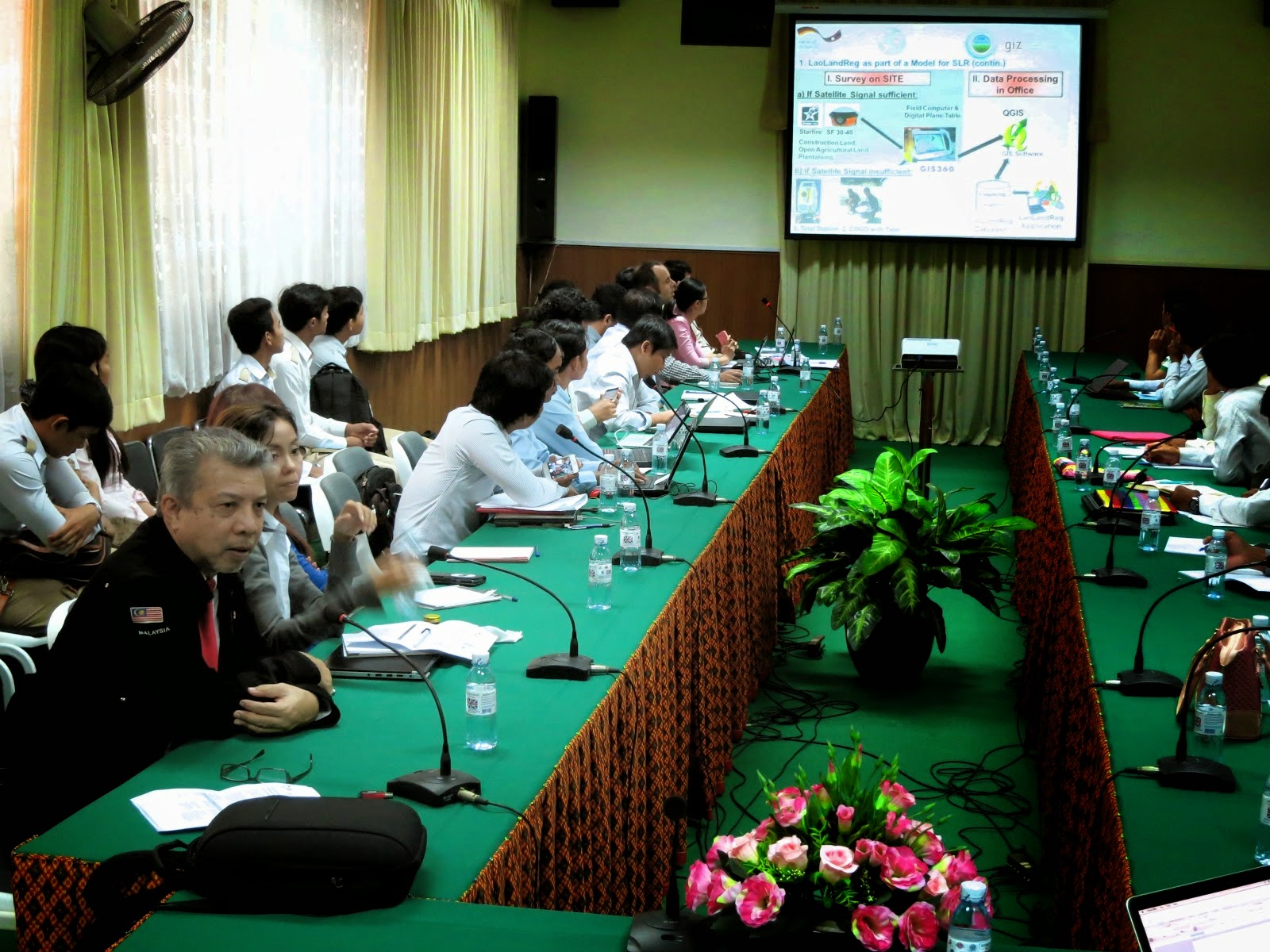
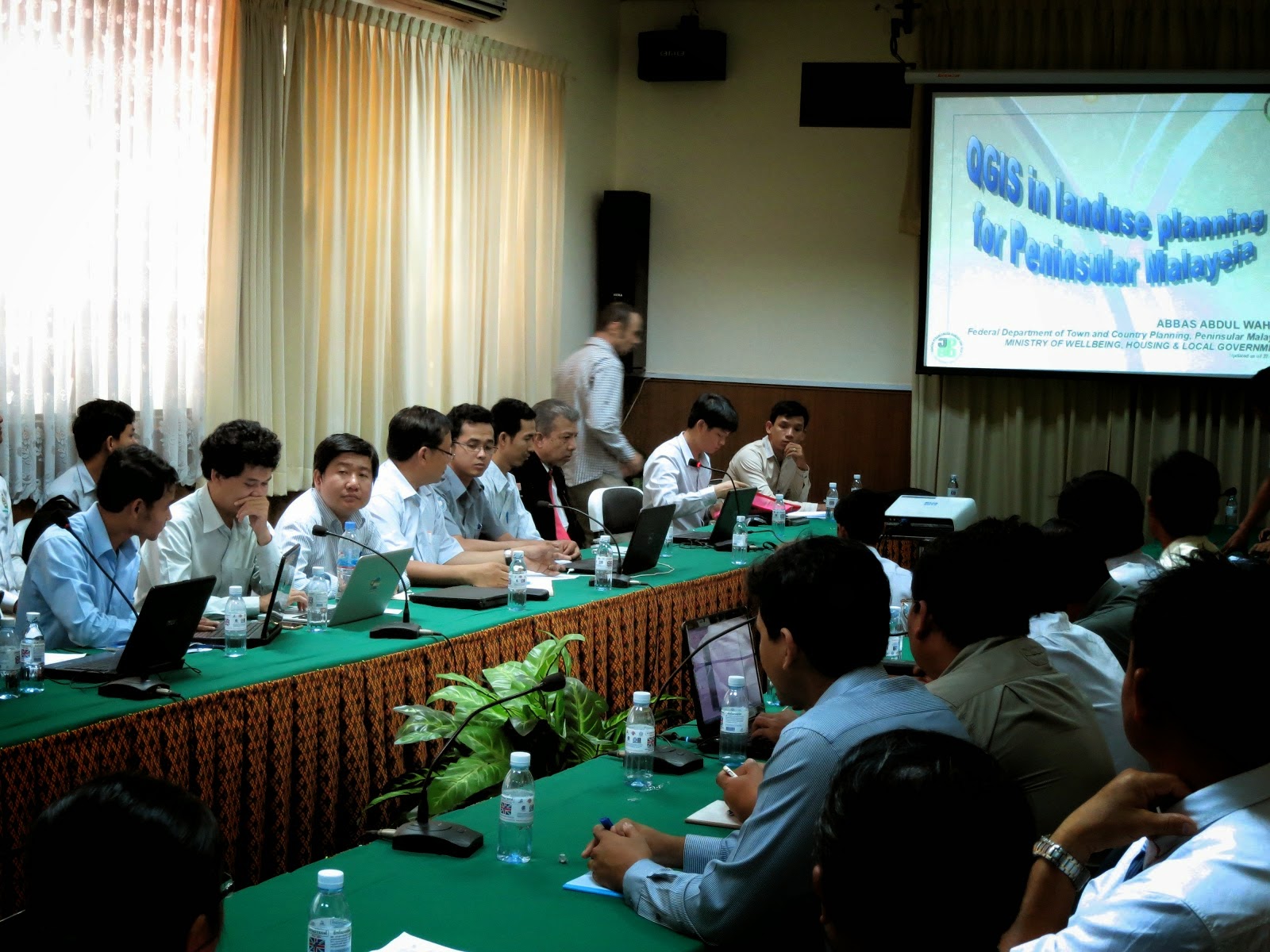
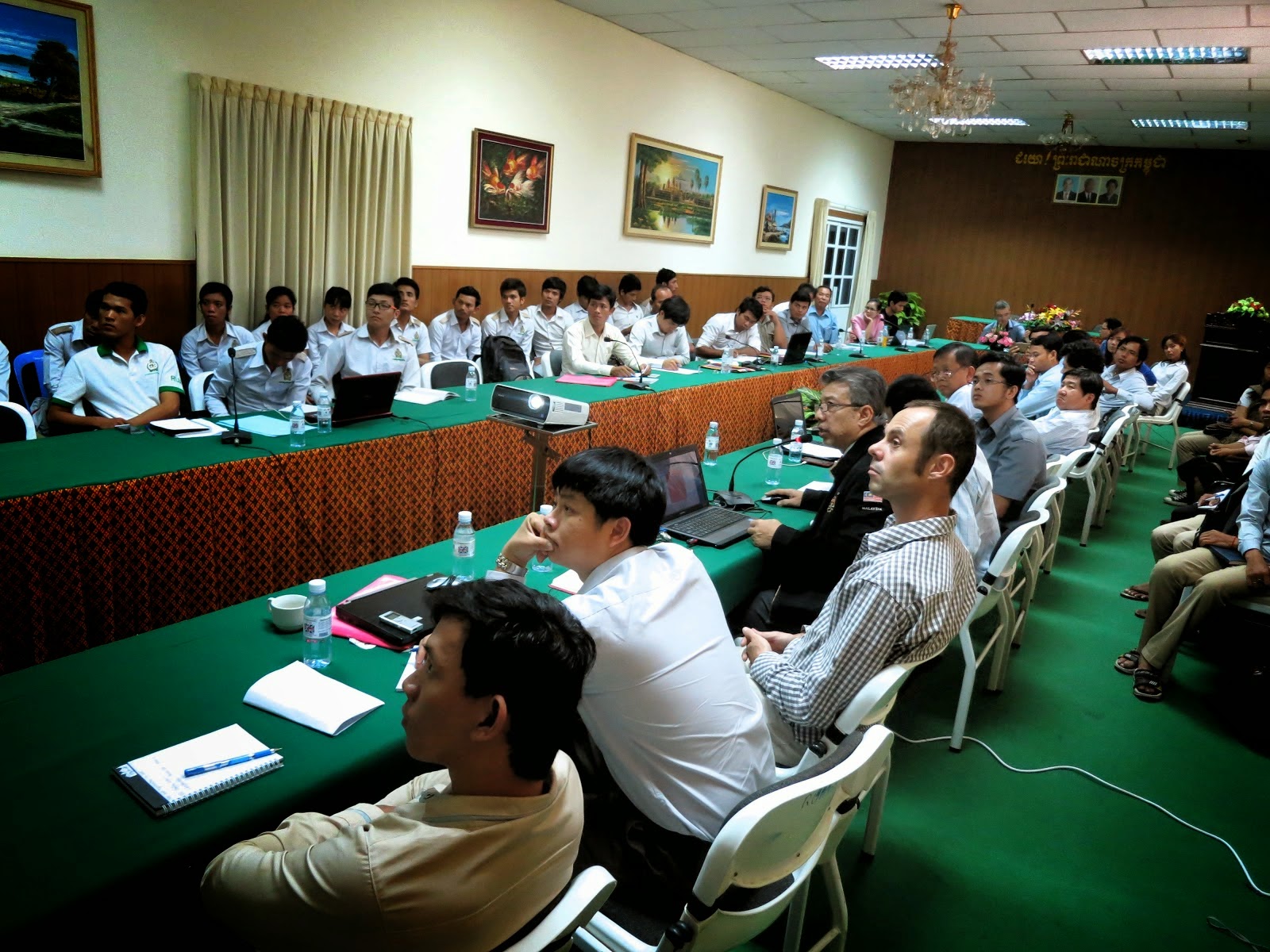
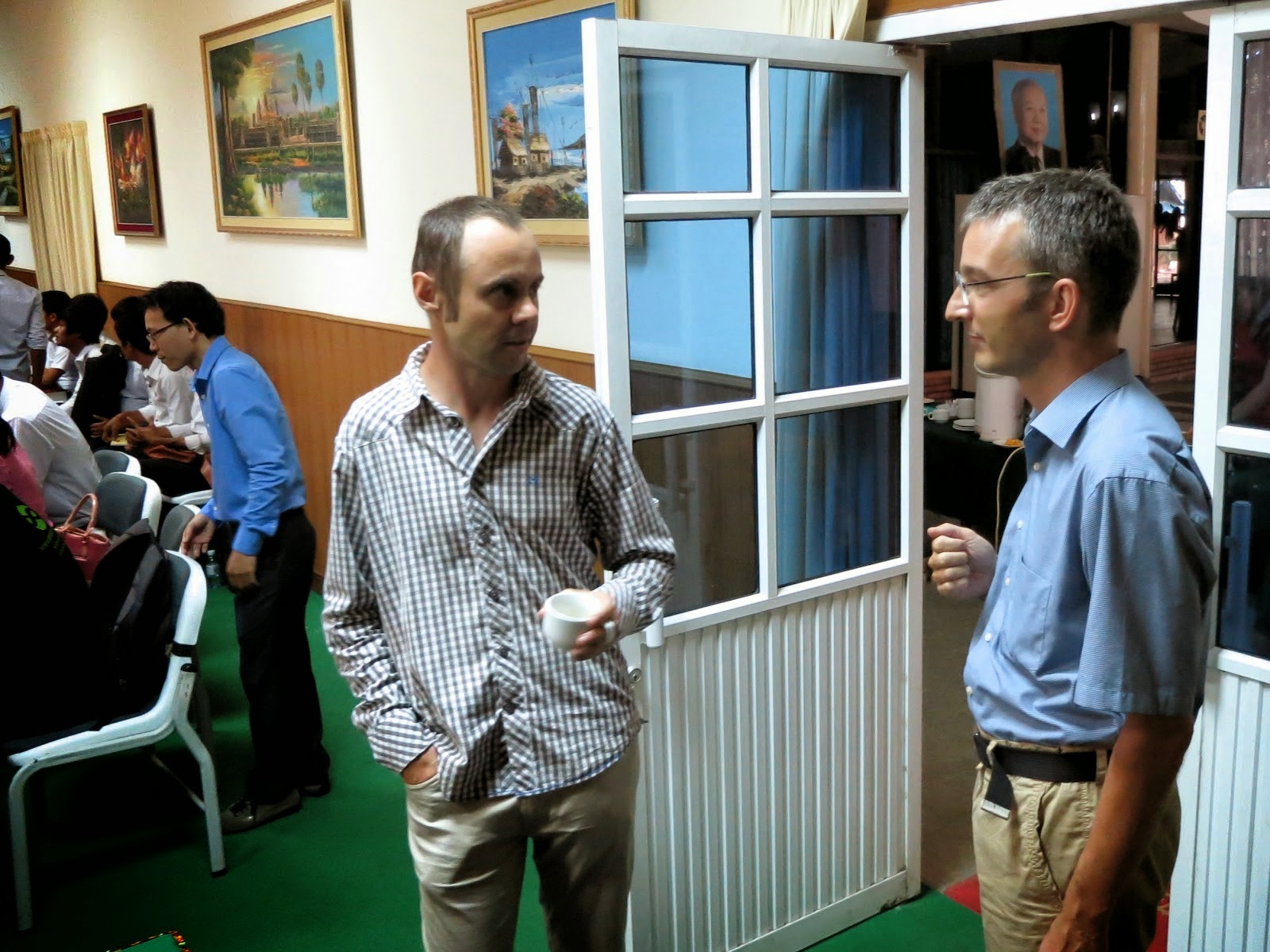
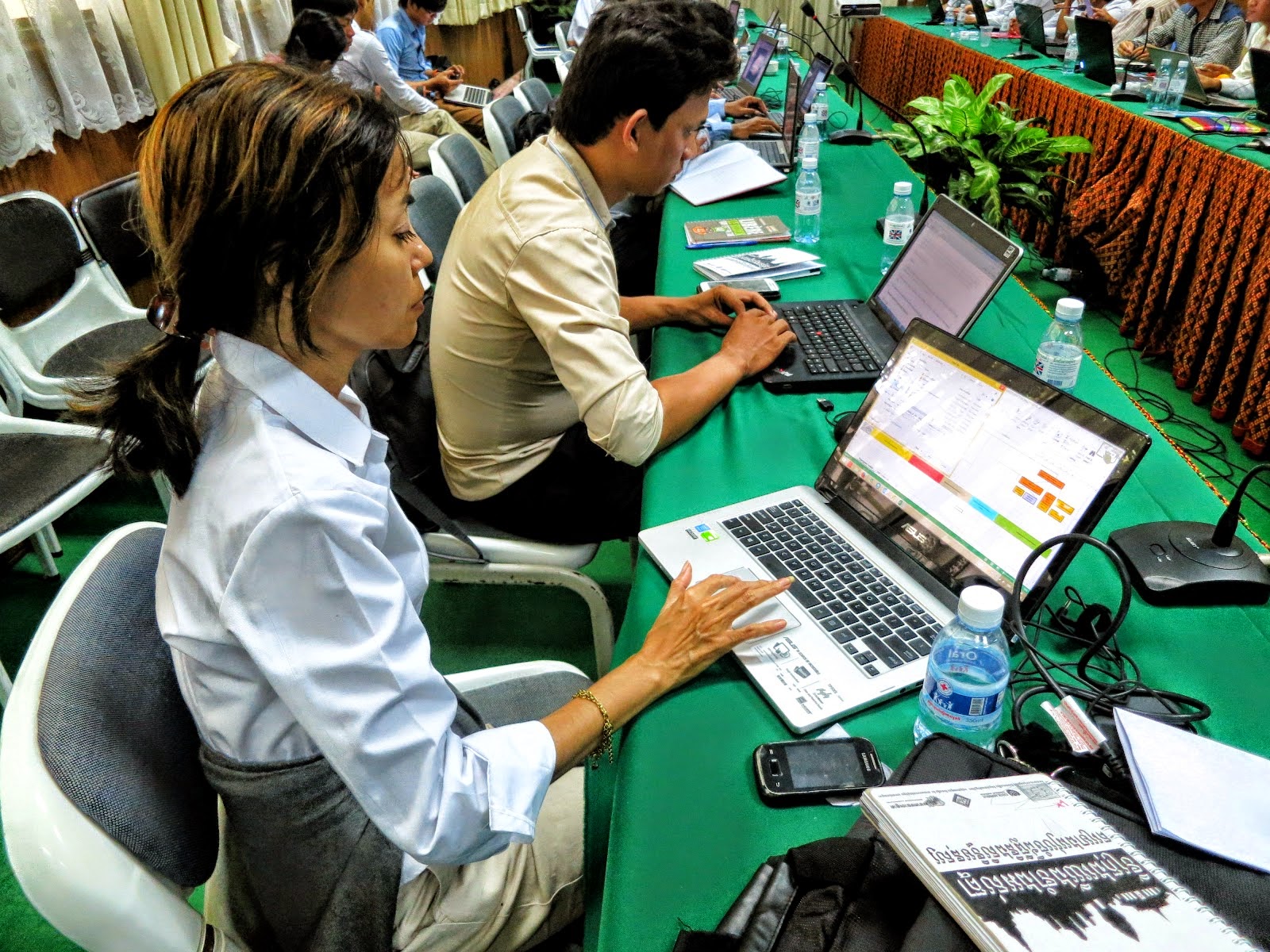
I was invited to give a talk at the above workshop organized by the Royal University of Agriculture, Cambodia in cooperation with Deutsehe Geshellschaft fur Internationale Zusammenarbeit (GIZ) GmbH. It centered on FOSS for land management and land administration with the objective to encourage the exchange of experiences and good practices, get rid of common misconceptions about FOSS and build trust in the reliability and the approach of open source software. There was a talk on the Laos Land registration System based on QGIS and PostgreSQL by Ms. Chansamai Kommanyvanh (Laos Ministry of Nat. Resources and Environment), Mr. Souksavanth Chanhtangeun and Mr. Christain Metzger (GIS Laos) After coffee break, I gave my talk on QGIS and landuse planning in Malaysia. This was followed by a talk on Geoserver implementation and integration into a website: the case study of the Open Development Cambodia website by Mr. Seila NHIEP (ODC). As we walked off for lunch, I was greeted by senior and junior participants who said they really enjoyed my presentation and found it most interesting. That pleased me a lot. After lunch, Mr. Christian Metzger talked during the workshop session on how to use the Toplogy Checker as well as plugins like MMGIS. If there was anything unfortunate, the power supply tripped 5 times during the afternoon but came back after 5 mins. I was told power failure trips are quite common in Cambodia however that day was an exception. Still, all-in-all, the Secretariat was most happy and agreed the workshop was a success where about 60 participants came and others had to be turned down because the venue could only handle a limited number of audience. I believed that with sceptics, one has to be honest about things, draw the line what QGIS can and cannot do, even clarify what desktop GIS do and cannot do then explain what alternatives are there, and lastly, the problems and challenges I faced to make the use of QGIS a success. Before this, I have been to Spain but never to Cambodia so for me, on the whole, it was most a most enjoyable trip.










